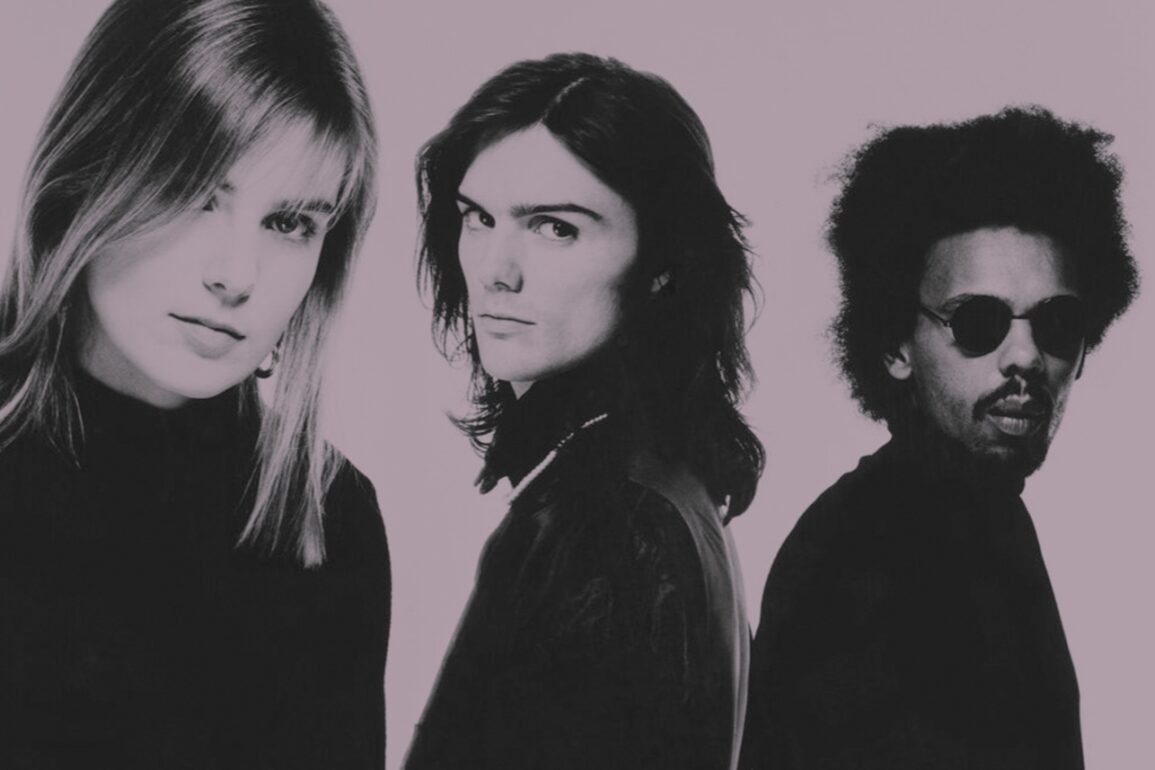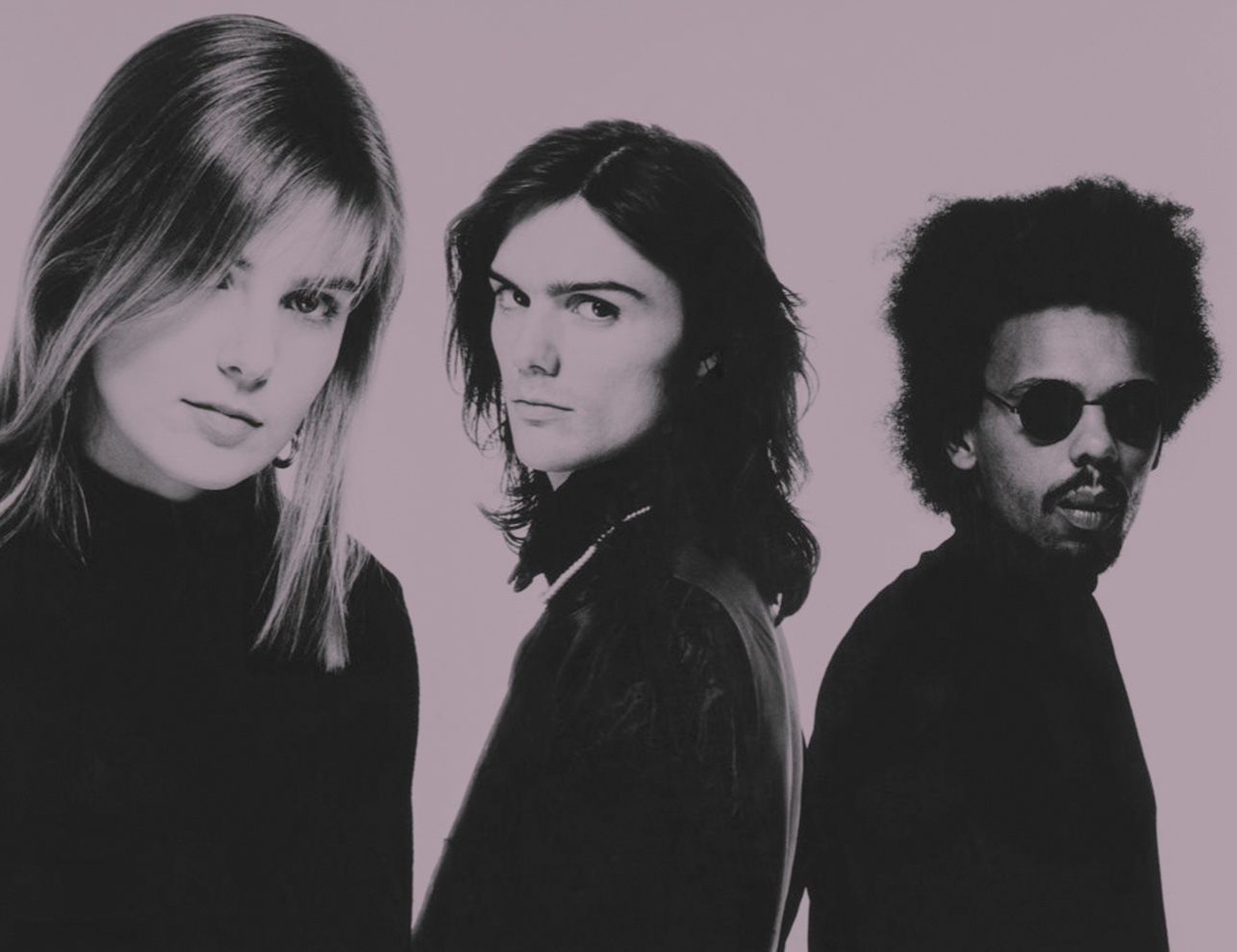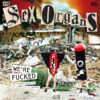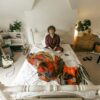It’s been almost four decades since The Dream Academy appeared, seemingly from nowhere, with the classic 80s hit ‘Life In A Northern Town’, a track that served as the perfect pointer as to what to expect from their debut album and indeed their work beyond. And now, the Cherry Red treatment has been given to the band’s three albums of beautifully arranged, truly wonderful songs, in the form of a 7 CD box set, Religion, Revolution & Railways, which also brings together non-album tracks, unreleased material and even an album of instrumentals.
Andy Page spent an hour in the company of instantly likeable, hugely positive Dream Academy singer / guitarist Nick Laird-Clowes, (who was joined in the band by Gilbert Gabriel on keyboards / vocals and Kate St. John on cor anglais / oboe / vocals and more!), to talk about putting together the box set and looking back on all things Dream Academy.
AP: We’ve just run a very favourable review of the new box set on the site (GIITTV writer Nick James awarded the set a 9/10 rating)
NL-C: Oh, that’s wonderful! It’s music from some time ago and I spent a really long time making it; I mean, putting together all the bits and everything – and it hadn’t really dated to me. I couldn’t believe it. I mean, because it didn’t really sound like music of its time. It was just what we liked and I was amazed how much I liked it.
AP: I think it would be very difficult for somebody to hear it now for the first time and put a year on it, because it’s not got those kind of 80s production things that you hear on other records, but rather a classic kind of sound.
NL-C: Yeah, that’s very good because even though we were using things of the time and weren’t shying away from it. When I first started working with Gilbert, he had a Celina string synthesizer, which was like a sort of probably late 70s Italian type thing! But the sound of it took you into a magical world when you start playing that and I play the acoustic guitar like whoa, we’re in a dream world, you know.
AP: It just hasn’t really aged. I’ve listened to the albums a lot over the years anyway, so it wasn’t a surprise! But obviously I hadn’t heard the additional (unreleased) stuff before.
NL-C: God, thank you! That’s wonderful, great!
AP: Was it down to the three of you to go through the vaults searching for materials for the set?
NL-C: Well, the band split up in 1990; Gilbert went his own way and Kate went to Van Morrison, so I’ve been the guardian of it since then, but in a way my role was always, as I said to Gilbert, however annoying it was, to take what everyone’s ideas were and put them into what I knew could work well. You know, it changed our lives, and we are all friends, have always been friends, couldn’t not be! They both came here to sign these postcards that came out with the box set to sign, like 500 postcards! And it was so lovely to see them. And I just thought we were so lucky to all be able to meet together and for it to work like that, because it’s all of our work. The first thing Gilbert said, which is really nice, was thank you so much for curating it.
AP: Were there any surprises going through the archives of things that you had forgotten or things that sounded different to the way you remembered?
DL-C: We made the first album almost like demos with me and George Nicholson producing. He was a staff producer at Warner Brothers and then I took it to David Gilmour, and then he listened. Because that’s how we’ve done ‘Life In A Northern Town’. We did the rest of the album like that and he then we spent two or three months with him sitting around in his studio. I’d say “That keyboard sound could be better” or you know, “I think why don’t you copy that bass but copy it with another guitar underneath”. You know, all very brilliant things, but when we got to the second album, he was making his first record without Roger, so we had to find a new producer and Kate had met Hugh Padgham we had dinner with him. I remember drinks with him and Hugh Cornwell from The Stranglers and he said “Oh I’d like to produce your album” and he said “Look, I’m really an engineer so you can do your production ideas, so we’re not gonna have conflict.” He suggested that we bring in Jerry Marotta (who had played with Peter Gabriel) and Larry Fast on keyboards, so we said “great” and we moved into Hans Zimmer‘s studio before Hans ever went to Hollywood – not sure he made a film yet, but he had an old photographer’s studio
I’ve found our original demos of things from when Gilbert and I first started writing together, we wrote ‘The Edge Of Forever’, ‘Test Tape No.3’, I wrote ‘Double Minded’ and ‘Bound To Be’ and we just set up in David’s big barn that he had and just recorded our live set. And then when we got signed, we put one or two out as B sides and re-recorded the others. Obviously, Warner Brothers must have a vast archive for all the bands they’ve ever had, and they must have got someone to start digitizing everything because they didn’t want to keep the tapes and they took photos of the tapes. So they sent me all of that so I could look at the tapes and see that, you know, the tracks had weird names on them and so, you know, it was hard to find all the things and some of them when you got them, they had not been digitized in the way you would do it now. So I had to go and get other copies and find other copies through different means and and then mastering was a whole other deal!
AP: How often would you say you’ve listened to the three actual albums themselves in the intervening years?
NL-C: Well, it’s odd because, you know they took so long to make, to get right. Then, when they were made, I probably didn’t listen. Well, then we went out to promote them, so you heard them a bit. Then, over the years, once the band had split up, I probably didn’t (hear them much). Then it was things like when they sampled it for Dario G (for their dance hit ‘Sunchyme’), then you maybe went back and listened to things again! Or if people wanted something for a film, but generally probably not so much in between, then 2014, Rhino put out the double ‘best of’ album, The Morning Lasted All Day.
AP: The box set looks like it would have taken an incredible amount of work to put together; it really looks like a ‘proper’ Dream Academy album too…
NL-C: It was more work than I had imagined, because I I cared so much about the aesthetic of the original albums. It’s always so important growing up with albums, so over seven albums, I I know it’s not how people listen to music now, but it’s how I wanted this to be so that even the albums that weren’t the three official albums would run in a sequence. So if you wanted to, you could play them from the beginning to the end, and to try and get things that made some kind of thematic sense, not just in the music, but in the subject matter and things. Everything had to be right, because what happens is the last thing you put out becomes the only version, probably, or the one that goes to the front of the queue. And so you’ve really got to be meticulous because all the credits were the final thing at the end. I couldn’t have one credit wrong because this is people’s lives. People earn their money on these credits.
AP: I didn’t know until I read the sleeve credits of the box set that Peter Saville had been involved in the band’s artwork?
NL-C: You know because I was a fan of albums and record buying in the early 80s, we went to the shops and the only things that worked that stood out that were mind-blowing, they happen to all be with this guy called Peter Saville, so it’s like when we finally got signed, I said, I know I want Peter Saville to do the artwork. He said to Gabriel, “Oh, I don’t like what you’re wearing” and took off his own polo neck and gave it to him to wear for the album sleeve! The cover is so strong anyway!
AP: Cherry Red have a good reach for these kind of career retrospective box sets, don’t they?
NL-C: They’re very good. I mean, the funny thing is that we wanted to be on Cherry Red (at the time) and we sent all our demos to them and we were turned down!
AP: It was quite nice to read that you said that your original label Warner Brothers were real music people at the time as well, because that’s not always the case, is it?
NL-C: Yes, it was not like ‘us and them’ – Lenny Waronker was the president, a brilliant producer who had produced Randy Newman and ‘Midnight at the Oasis’. So when you went in to play your tracks to Lenny, he’d sit like this with his hand on his head, listening deeply and say “Third verse needs a tambourine!” Michael Ostin had signed us and he was working with Prince and Madonna…Prince and Madonna ruled at that point that the Prince tracks that were coming through fast, it’s like he would be playing them to us and we’d all say, “God, ‘When Doves Cry’, what the hell is that? You know, all these amazing things. And ‘Raspberry Beret’; we just we were hearing everything before it came out and we were totally into it because we were such fans.
AP: It’s nice to see your (non-album single) cover of The Smiths’ ‘Please, Please, Please Let Me Get What I Want’ in the set…
NL-C: Every time we went to see Geoff Travis, (who was running the Warner Bros subsidiary Blanco Y Negro), he played us this new band. He had The Smiths (on his label Rough Trade) and so they were from the very first tracks he got from them. We always played the B-sides, like ‘Back To The Old House’ when we were rehearsing at Kate’s flat, we were really into them though people called them miserablists. So when I heard ‘Please, Please, Please…’ the three of us loved it and I took it to David Gilmour after the album had finished and said, “Listen, this is how good they are”, and I said we’d like to do a cover of it and he’s got such good ears and he said “It’s brilliant. Let’s do it this weekend”. It found its place in the Ferris Bueller film and now it’s immortalised!
AP: And if you could pick one of your songs to have an afterlife in the same way that ‘Running Up That Hill’ has had, which one would you pick?
NL-C: ‘The Love Parade’ or ‘The Last Day Of The War’, you know, we made that just after ‘Life In A Northern Town’ and it never came out. We were saving it for the next album, then when we did the album, it wasn’t right for that.
Religion, Revolution & Railways is out now on Cherry Red Records.





